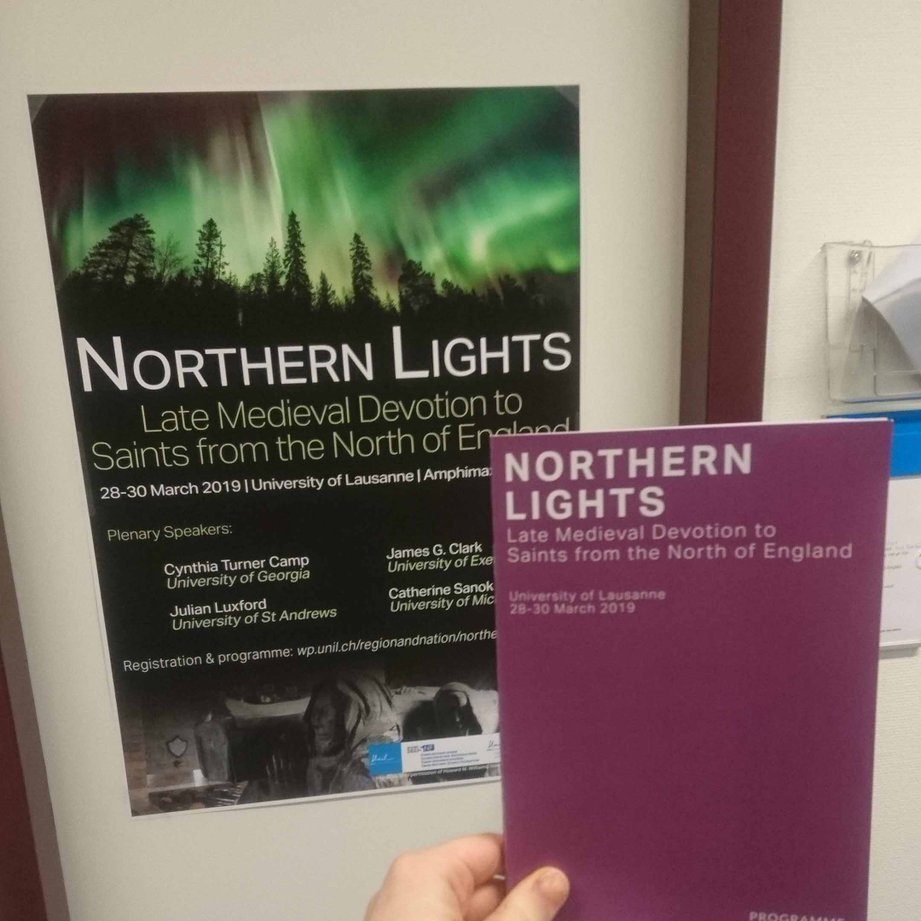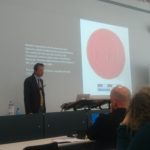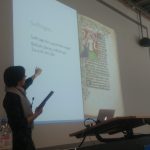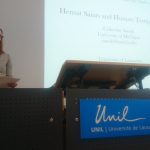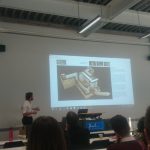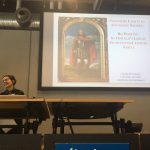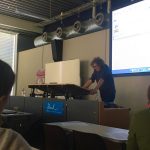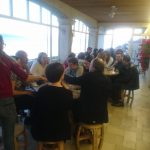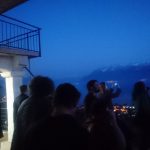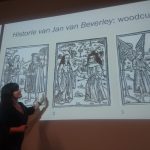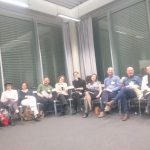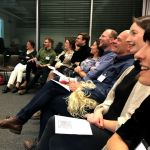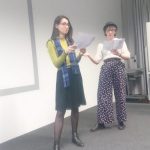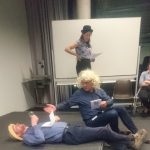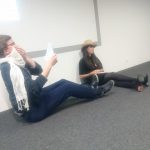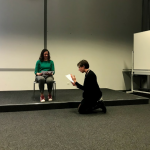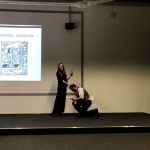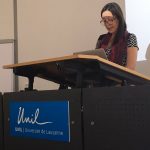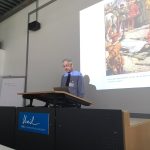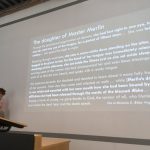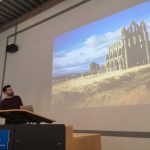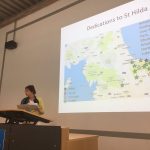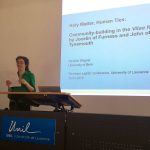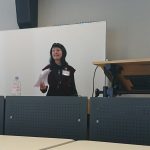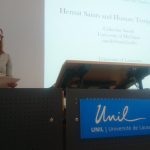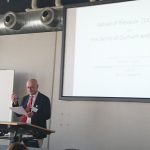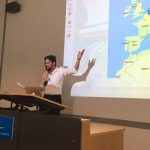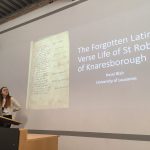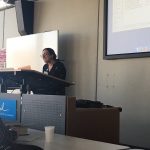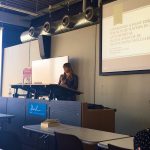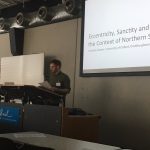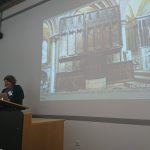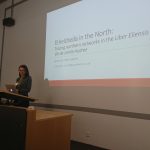Our project conference “Northern Lights: Late Medieval Devotion to Saints from the North of England” was held at the University of Lausanne between 28 and 30 March. We welcomed around 40 delegates from across the UK, Ireland, Switzerland, Turkey, the US, and Japan.
The four cornerstones of the event were the exceptional plenaries on topics as diverse as ‘Northernness as a Hermeneutic’ (Julian Luxford, University of St Andrews – Art History); ‘Praying to Northern Saints’ (Cynthia Turner Camp, University of Georgia – English Literature); ‘The Reception of St Oswine in Late Medieval England’ (James Clark, University of Exeter – History); and ‘Hermit Saints and Human Temporalities’ (Catherine Sanok, Universtiy of Michigan – English Literature). There were also interdisciplinary sessions on female sanctity, Cumbrian hagiography, reading, translation, and materiality, alongside sessions dedicated to particular northern English saints, including Richard Rolle, Aelred of Rievaulx, and Robert of Knaresborough.
Such a broad array of investigative avenues can hardly be summarised here, but emergent themes from the conference include questions around the definition of ‘the north of England’ (traditionally thought of along a north-south axis), as well as questions about the centrality of St Cuthbert. The interdisciplinarity of the event highlighted that when analysing northern English saints’ cults according to the poles of region and nation, this must be done with recognition of the fact that different types of evidence (literary, liturgical, material, etc.) may yield conflicting results, complicating any one picture of region, nation, and northern sanctity in the late medieval devotional landscape.
Light relief was provided, however, by way of a varied programme of cultural and historical events. On the first evening, delegates were treated to a drama workshop on the play of St John of Beverley (run by Professor Elisabeth Dutton, University of Fribourg). This interactive session introduced most of us to the play for the first time, and many were surprised to find the script littered with hairy hermits, unspeakable crimes, and resurrected sisters – a drama far removed from the saintly life-story of the 8th-century Northumbrian bishop who stars in the play’s title.
Delegates were also given the opportunity to explore the cathedrals of Durham and Canterbury, and Hexham Abbey, thanks to a 3-D digital model demonstration by John Jenkins (University of York) who showcased the fruits of a digital humanities project based at York’s Centre for the Study of Christianity and Culture. Our Saturday excursion to the medieval Abbey of St Maurice was followed by a scenic and convivial wine-tasting in the vineyards of the Domaine Croix Duplex in Grandvaux, while our fondue evening in Lausanne’s historic Pinte Besson rounded off what proved to be a most friendly and fruitful international meeting.
Brepols have expressed interest in an edited collection arising from the conference, which the FNS project team is planning to publish in 2020/21. Conference tweets can be found under the #Lights19 hashtag.

